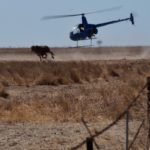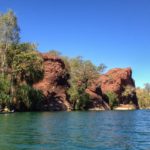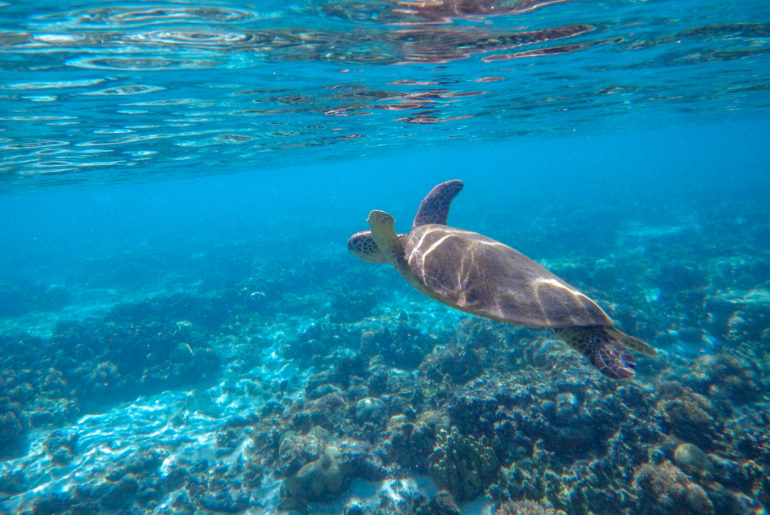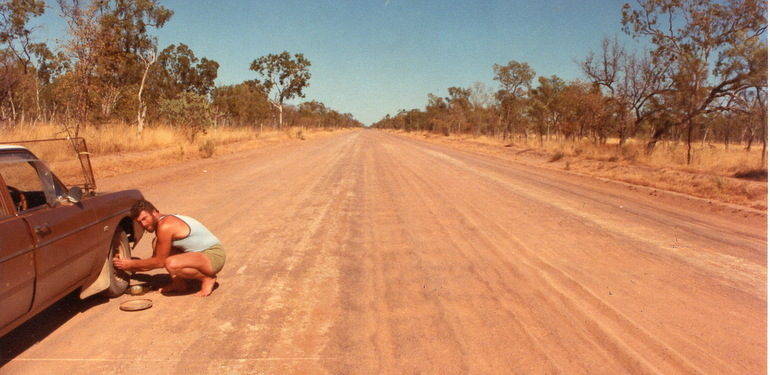“Bouncing from nowhere to nowhere for no apparent reason….”
Accurately described by the stationmaster in such a sentence, it’s a wonder anyone bothers to catch The Gulflander.
Croydon could definitely be described as nowhere. At a time the second most productive goldmine in Queensland, it is now just another “once-was” on the Savannah Way, the scenic outback drive from Cairns to Broome.
And so could Normanton, a former river port in the Gulf of Carpentaria, now home to statues of a big barramundi and a big crocodile, and a purple pub.
Both are “blink-and-you’ll-miss-it” kind of places, but that isn’t what The Gulflander’s tagline refers to. The railway in Gulf Country has no connection to the rest of Queensland’s rail network. In a past life it was the only way of traversing the regularly flooded route between the goldfields and the port. Now it is a heritage-listed scenic train, which operates at a loss just so tourists like me can rattle across the countryside.
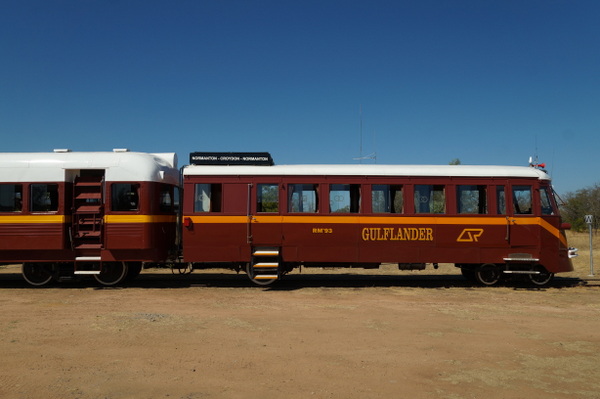
The sun brings only the slightest warmth when we pull up at the Croydon Railway Station, but the gleaming train on the tracks is ready to go. A number of cars, caravans and people are mingling about the station when Ken, the stationmaster, shouts “All aboard”. Less than half the crowd is on board when Ken shuts the door to the front carriage; the people who have come just to see the train outnumber the five passengers actually travelling on it.
“We had 80 on here yesterday,” Ken says, as all of us claim a window seat. A coach transfer back to Normanton makes it possible for people to make a 151km one-way trip on the train, but some also continue by road to connect with The Savannahlander to Cairns. Only two of our five came down to Croydon on the train the day before.

The Thursday trip is always quieter, Ken tells us, but it means we can make some unscheduled stops along the way. It also gives Carl, our first-time driver, a smaller audience as he learns the ropes.
The gears of the diesel-powered RM93 are hard to master, but eventually we’re on our way.
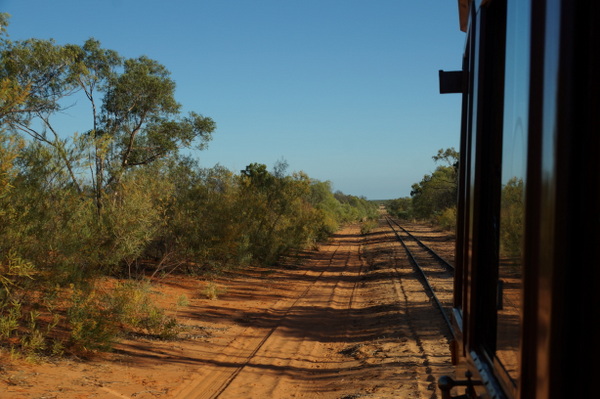
The track is straight and mostly level and the journey is relaxing and beautiful. The landscape is red dirt, trees, scrub and tall, yellow grass which makes it hard to spot the wallabies and birds hiding among it. There are trails of hoof prints in the sand along the track, but we see cattle across the line only once and they move with a blast of the whistle.
Our first unscheduled stop is the site of a derailing in 1956, where half an axle from the train involved has been claimed by termites. The other sits in the grass a few metres up the track. Part of the track itself is dented from where the train scraped across it over half a century ago. Steel sleepers were used instead of timber when the track was laid between 1888 and 1891 and have withstood both time and regular floods. Very little of the original track has been replaced.
The railway from Normanton was initially proposed to go to Cloncurry, but when gold was discovered in Croydon and the town boomed, the track went there instead. “The importance of The Gulflander is often underestimated,” Ken tells us, explaining that for the first 20 years of its service, The Gulflander made four return trips a week, taking supplies, freight and people to Croydon and any settlements on the route. Until the road between Normanton and Croydon was sealed in the mid 1990s, the train was the only way to pass between the towns when the rain washed out the road. Even now it still carries the post to some of the stations and we keep an eye on the letterboxes on our way past, looking for a pink ribbon that would mean there’s mail for us collect.
When the line opened Blackbull Siding became a regular stop for morning tea and it still is. Although it’s only a 30-minute drive from Croydon it takes the train nearly two hours to get here. Quite a few cars have pulled over to see The Gulflander and more wait up the track for a photo opportunity once we get going again – it really is an icon in these parts.
We gain two more passengers who have caught the bus from Normanton and waited at the rest stop for us as the bus doesn’t make it to Croydon before the train departs.
The rest of the journey is slow and I spend it staring out the window. Rather than the landscape becoming more populated or developed in the 123 years of The Gulflander’s operation, it’s the opposite. Towns such as Golden Gate, once home to 3000 people, now don’t exist. It’s not even a ghost town. It’s just not there anymore. The only trace of the old station is a concrete loading ramp. The paddocks probably look just as they did a century ago – except for the one with a rusty car wreck in it.
We make another unscheduled stop at the waterless Norman River. The passengers and guards get off while Carl reverses The Gulflander over the bridge so we can get photos. It’s one of the perks of the Thursday trip.
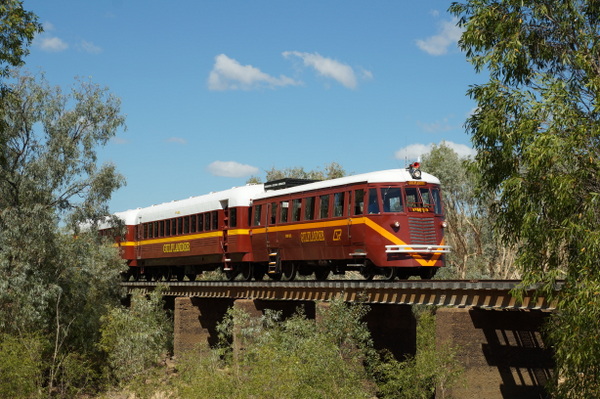
At some point the dirt and sand lightens, reflecting the savannah landscape around us. It’s dry and dusty and makes is difficult to comprehend the height of the 1974 flood marker, which sits well above the tree line. Travelling in 30C heat and trying to stay out of the scorching sun coming in the right side of the carriage, I can’t imagine everything several metres under water.
The mile markers on the side of the track slowly get lower and soon we’re at Normanton. Nowhere.
Do it yourself
The Gulflander travels from Normaton to Croydon each Wednesday, departing at 8.30am and arriving at 1.30pm. The return trip is made on Thursday, departing Croydon at 8.30am and arriving in Normanton at 1.30pm. The train does not operate in the wet season. Fares are $69 one way, $115 return. Seniors, pensioners and children are half price. You can see The Gulflander at Blackbull Siding on Wednesdays at 11.15am and Thursdays at 10.15am.
Several additional excursions run from both Croydon and Normanton stations so if you can’t make the regular service, check with the Normanton station to see if there are other trips.










